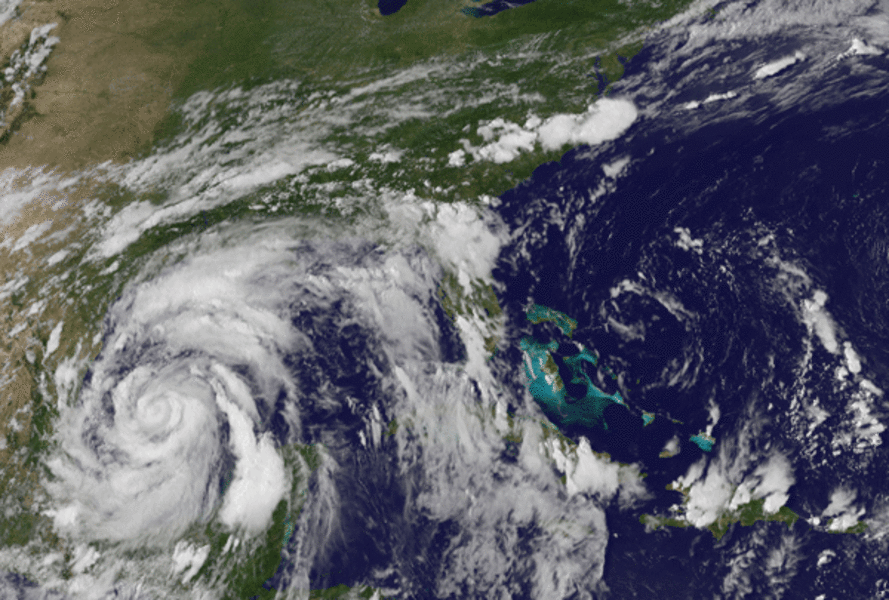Hurricane Alex pushes oil onto Gulf coast beaches
Loading...
| Grand Isle, Louisiana
Rough seas generated by Hurricane Alex pushed more oil from the massive spill onto Gulf coast beaches as cleanup vessels were sidelined by the far-away storm's ripple effects.
The hurricane was churning coastal waters across the oil-affected region on the Gulf of Mexico. Waves as high as 6 feet (1.8 meters) and winds over 25 mph (40 kph) were forecast through Thursday just offshore from the Mississippi Delta in Louisiana to northwestern Florida.
In Louisiana, the storm pushed an oil patch toward Grand Isle and uninhabited Elmer's Island, dumping tar balls as big as apples on the beach.
"The sad thing is that it's been about three weeks since we had any big oil come in here," marine science technician Michael Malone said. "With this weather, we lost all the progress we made."
The loss of skimmers, combined with gusts driving water into the coast, left beaches especially vulnerable. In Alabama, the normally white sand was streaked with long lines of oil. One swath of beach 40 feet (12 meters) wide was stained brown and mottled with globs of oil matted together.
Dozens of vessels that were being used to combat the oil spill were tied to docks Tuesday as Alex, more than 500 miles (800 kilometers) away, approached the Texas-Mexico coast. Most days, the fleet would have been skimming oil from the Gulf and ferrying workers and supplies. But the hurricane turned many people fighting the 11-week-old spill into spectators. And they will be for days.
The nasty weather will likely linger in the Gulf through Thursday, National Weather Service meteorologist Brian LaMarre said.
Officials scrambled to reposition boom to protect the coast, and had to remove barges that had been blocking oil from reaching sensitive wetlands. Those operations could soon get a boost. The U.S. accepted offers of help from 12 countries and international organizations. Japan, for instance, was sending two skimmers and boom.
Alex is projected to head for the Texas-Mexico border region and stay far from the spill zone off the Louisiana coast. It is not expected to affect work at the site of the blown-out well. But the storm's outer edges complicated the cleanup.
Early Wednesday, Alex had maximum sustained winds near 80 mph (130 kph). The National Hurricane Center said the Category 1 storm is the first June Atlantic hurricane since 1995. It is on track for the Texas-Mexico border region and expected to make landfall Wednesday night.
Skimming efforts off the coasts of Louisiana, Florida, Alabama and Mississippi had mostly stopped.
Scientists have said the rough seas and winds, though, could actually help break apart the oil and make it evaporate faster.
The wave action, combined with dispersants sprayed by the Coast Guard, have helped break a 6-by-30-mile (10-by-50-kilometer) oil patch into smaller patches, Coast Guard Cmdr. Joe Higgens said.
"It's good news because there is less on the surface," Higgens said. "It's surface oil that washes up on the beaches."
Jefferson Parish Council member Chris Roberts said the oil was entering passes Tuesday at Barataria Bay, home to diverse wildlife. A day earlier, barges that had been placed in the bay to block the oil were removed because of rough seas. Boom was being displaced and had to be repositioned, he said in an e-mail.
The Bureau of Ocean Energy Management, Regulation, and Enforcement said 28 platforms and three rigs in the path of the storm in the western Gulf have been evacuated. Still in the water are vessels being used to capture or burn spewing oil and gas and those drilling relief wells that officials say are the best hope for stopping the leak for good.
Hurricane warnings were posted for parts of the coast along Mexico and Texas. Except for the border area itself, though, most of the warning area is lightly populated.
So far, between 70 million gallons (268 million liters) and 137 million gallons (520 million liters) of oil have spewed into the Gulf from the broken BP well, according to government and BP estimates. The higher estimate is enough oil to fill half of New York's Empire State Building with oil.
More containment help could be arriving after the storm lets up. Mexico, Norway, Holland and Japan are providing skimmers; Canada is providing containment boom; and Croatia is pitching in with technical advice. Only one offer has been rejected, according to the chart. Dispersant chemicals offered by France are not approved for use in the U.S.
The U.S. rarely faces a disaster of such magnitude that it requires international aid, though it did accept assistance after Hurricane Katrina.
RELATED:





